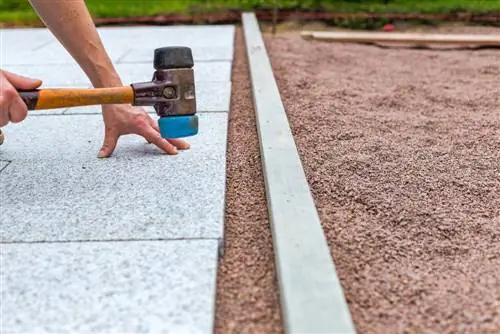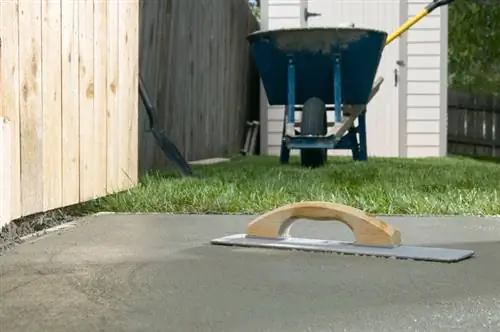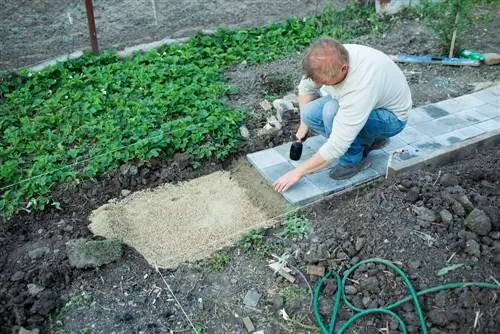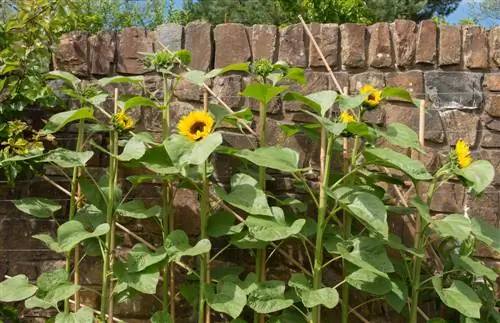- Author admin [email protected].
- Public 2023-12-16 16:46.
- Last modified 2025-01-23 11:21.
You don't necessarily have to create a substructure for your garden path; some paths do quite well without it. However, a solid foundation can significantly increase the lifespan of a gravel path or a paved path.
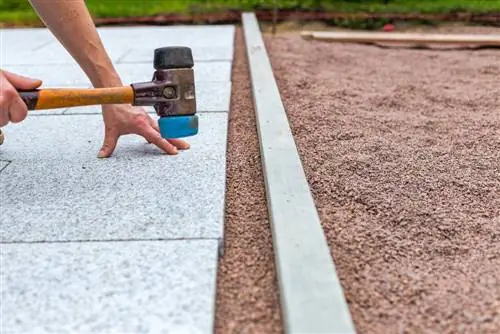
How to create a base for a garden path?
A solid base for a garden path increases its lifespan, prevents it from sinking and freezing in winter and makes it more difficult for weeds to grow. To do this, the ground is excavated, curbs are placed, an approximately 10 cm high frost protection layer made of gravel, a gravel leveling layer and an approximately 4 cm high sand bed are created before the paving stones or sidewalk slabs are laid.
In addition, a solid base layer ensures your safety because it prevents or delays the sinking and freezing in winter of individual paving slabs or paving stones and thus the occurrence of tripping hazards. This will also make your path easier to maintain, as weeds have a hard time establishing themselves on your path. If it does happen, it's easier to remove.
Sense and purpose of a substructure:
- prevents the path from sinking
- Way can't freeze up in winter
- Lifespan of the path is extended
- Preventing weeds from growing
How do I create the right substructure?
The thickness of the base layer depends on various things, such as the type and permeability of the soil, the stress on the path and the weather or climate where you live. In severe frost, a path with a thin substructure risks freezing, but in a mild maritime climate this risk is low.
Dig the ground as deep as the path and substructure should be high. When determining the width, also take the curbs and joints into account. Before you lay the base layer, place the curbs, ideally in a concrete foundation. Then add the frost protection layer of gravel. It should be approx. 10 cm high and well compacted.
It is best to use gravel for the leveling layer. This is followed by a bed of sand about 4 cm high. You can then lay the paving stones or paving slabs, tap them firmly and grout them.
Does a wooden path also need a substructure?
A wooden garden path usually does not require a classic base layer. For a stable construction, use joist shoes or drive-in sleeves to anchor the path in the ground. Cross and longitudinal beams are used to fasten the planks.
Tip
Always give a paved path a solid base, otherwise in a few years you will be annoyed by sunken stones and tripping edges on the path.

